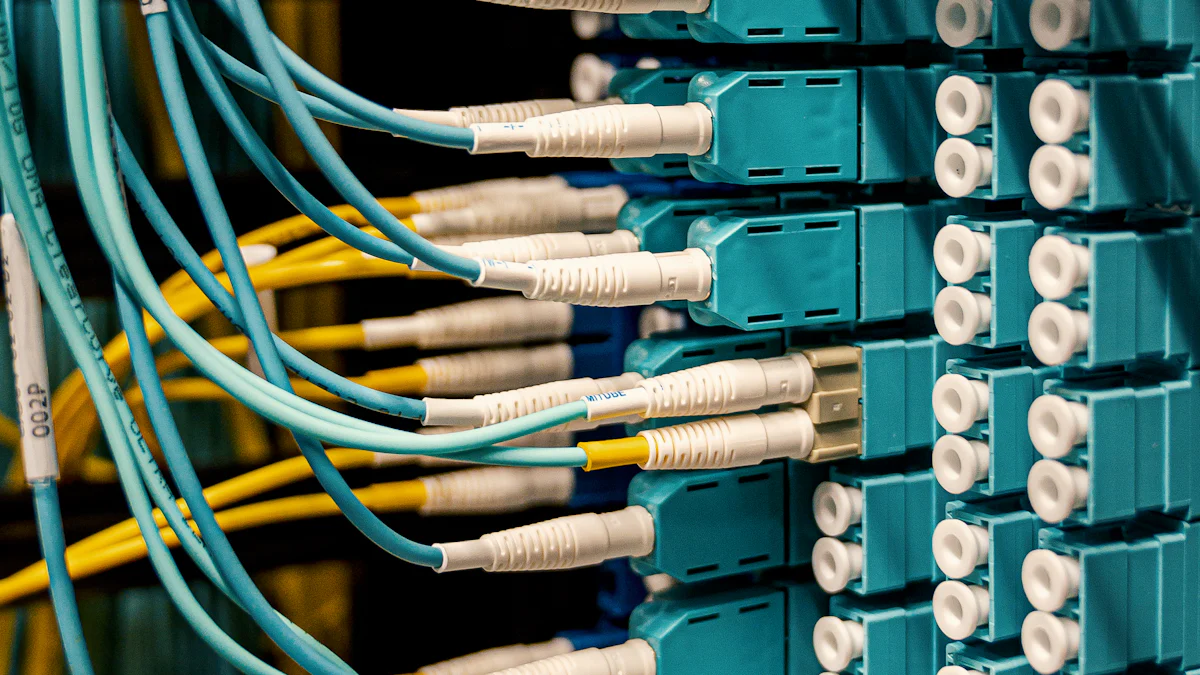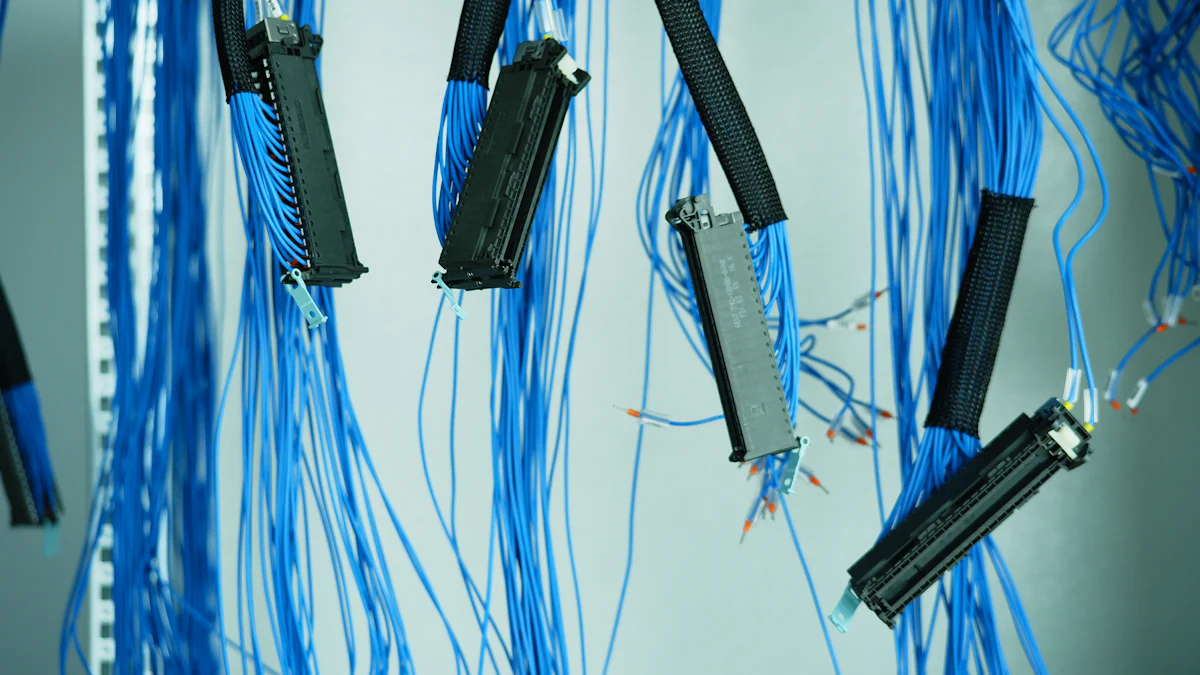Unveiling the Superiority of ADSS Cables in Self-Support Fiber Installations

In the realm of fiber optic installations, ADSS cables stand out as a revolutionary solution. These cables, designed for overhead applications without additional support structures, play a pivotal role in self-support fiber installations. The growing demand for high-speed internet and communication services has propelled the market for ADSS cables globally. This blog aims to delve into the unparalleled advantages and applications of ADSS cables, shedding light on their significance in modern connectivity solutions.
Advantages of ADSS Cables

When comparing ADSS cables to traditional aerial copper cables, the superiority of ADSS cables becomes evident. The key differences lie in their ability to provide higher bandwidth, faster data transmission rates, and exceptional resistance to environmental factors. This makes ADSS cables a top choice for modern fiber installations.
Lightweight and Easy Installation
No Need for Messenger Wire
One of the standout features of ADSS cables is their self-supporting nature, eliminating the need for a messenger wire. This simplifies the installation process significantly, reducing both time and material requirements. With ADSS cables, installation teams can streamline their workflow and achieve efficient results.
Simplified Installation Process
The ease of installing ADSS cables sets them apart from other solutions like OPGW and OPAC. Their lightweight design and flexibility make them easier to handle during installation, leading to quicker deployment times and cost savings. In comparison, traditional options often require additional support structures, adding complexity to the installation process.
Durability and Reliability
Resistance to Environmental Conditions
ADSS cables are engineered to withstand various environmental challenges, ensuring reliable performance in diverse climates. Their all-dielectric construction provides insulation against harsh weather conditions, making them a durable choice for long-term installations.
Longevity in Various Climates
Unlike OPGW cables that have temperature limitations, ADSS cables excel in a wide range of climates. From scorching heat to freezing cold, these cables maintain their integrity over time. This longevity ensures that network operators can rely on ADSS cables for consistent performance regardless of external conditions.
Cost-Effectiveness
Reduced Installation Costs
Opting for ADSS cables translates into reduced installation costs due to their self-supporting design. Without the need for additional support structures or messenger wires, expenses related to materials and labor decrease significantly. This cost-effective solution allows organizations to allocate resources more efficiently while still benefiting from high-quality fiber optic connectivity.
Long-Term Savings
In addition to initial cost savings, ADSS cables offer long-term financial benefits. Their durability and reliability minimize maintenance requirements and replacement costs over time. By investing in ADSS cables, companies can enjoy sustainable savings throughout the lifecycle of their fiber optic networks.
Installation Process

Preparation and Planning
Before embarking on the installation of ADSS cable, meticulous preparation and planning are essential to ensure a seamless process. Conducting a thorough site survey and analysis is the initial step in determining the optimal route for cable placement. This involves assessing factors such as existing infrastructure, environmental conditions, and potential obstacles along the installation path.
Site Survey and Analysis
During the site survey, technicians evaluate the terrain to identify suitable attachment points for the ADSS cable. By analyzing the structural integrity of poles or towers where the cable will be mounted, they can anticipate any challenges that may arise during installation. Additionally, considering factors like clearance requirements and proximity to electrical lines is crucial to prevent interference and ensure safety.
Material Selection
Choosing the right materials for the installation is paramount to guaranteeing long-term performance. High-quality hardware such as suspension assemblies, tension clips, and grounding accessories play a vital role in supporting the ADSS cable effectively. Opting for durable components that withstand environmental stressors enhances the reliability of the entire fiber optic network.
Installation Steps
Once the groundwork is laid out through planning, executing precise installation steps is key to achieving a successful deployment of ADSS cables. The following steps outline a systematic approach to installing these self-supporting fiber optic cables:
Pole-to-Pole Span Setup
Commencing with establishing pole-to-pole spans, technicians carefully measure and position each attachment point along the designated route. Ensuring proper tension levels and clearances between cables are maintained throughout this phase guarantees stability and optimal performance of the ADSS cable network.
Securing the ADSS Cable
Securing ADSS cables at designated support structures demands attention to detail and adherence to industry standards. Using appropriate hardware like suspension clips or armor rod assemblies, technicians affix the cable securely while maintaining its integrity. Proper tensioning techniques are employed to prevent sagging or excessive strain on the fiber optic strands.
Post-Installation Checks
After completing the physical installation of ADSS cables, conducting comprehensive post-installation checks is imperative to validate network functionality and longevity. These checks encompass rigorous testing procedures and adherence to maintenance guidelines for sustained performance.
Testing and Verification
Technicians perform end-to-end testing procedures to verify signal integrity, bandwidth capacity, and overall network connectivity. Through specialized equipment and software tools, they ensure that data transmission rates meet specified standards without signal loss or interference.
Maintenance Guidelines
Establishing routine maintenance protocols is essential for preserving the efficiency of ADSS cable installations over time. Regular inspections, cleaning procedures, and periodic assessments help detect potential issues early on, preventing downtime or service disruptions.
Applications and Use Cases
Telecommunications
In the realm of telecommunications, ADSS cables have revolutionized long-distance communication networks. These cables serve as the backbone for high-speed data transmission, voice services, and video streaming. By leveraging the advanced capabilities of ADSS cables, telecommunication companies can ensure seamless connectivity across vast distances. The reliability and bandwidth capacity of these cables make them indispensable in meeting the growing demands for efficient communication infrastructure.
Long-Distance Communication
ADSS cables excel in facilitating uninterrupted long-distance communication channels. Their ability to transmit data swiftly over extended spans ensures that information reaches its destination without delays or disruptions. Whether it's connecting urban centers or remote regions, ADSS cables provide a reliable link for voice calls, internet browsing, and multimedia streaming.
High-Speed Internet
The demand for high-speed internet access continues to surge globally, driving the need for robust fiber optic solutions like ADSS cables. These cables enable rapid data transfer rates, supporting activities such as online gaming, video conferencing, and cloud computing. With ADSS cables, users can enjoy seamless internet connectivity with minimal latency and maximum bandwidth.
Utility Companies
Utility companies rely on ADSS cables to enhance their operations through efficient electrical grid integration and smart grid applications. By deploying these self-supporting fiber optic cables, utility providers can monitor power grids in real-time and detect faults early on. The versatility and durability of ADSS cables make them ideal for supporting critical infrastructure systems.
Electrical Grid Integration
Integrating ADSS cables into electrical grids enables utility companies to establish reliable communication networks along transmission lines. These cables facilitate the exchange of vital data related to power distribution, grid stability, and energy management. With ADSS cables, utility providers can optimize their grid operations while ensuring continuous monitoring and control capabilities.
Smart Grid Applications
Smart grid technologies rely on seamless data transmission and communication systems to enable automated processes and real-time decision-making. ADSS cables play a crucial role in supporting smart grid applications by providing secure and high-bandwidth connectivity between various components. From smart meters to distribution automation devices, ADSS cables form the backbone of modern utility infrastructures.
Separate Areas for Distribution Cable and Drop Cable
In network deployments, distinguishing between distribution cable and drop cable areas is essential for optimizing performance and efficiency.
ADSS Cable in Distribution Networks
When implementing ADSS cable in distribution networks, organizations benefit from enhanced signal reliability over long distances. These networks serve as primary conduits for transmitting data to multiple endpoints efficiently. By utilizing ADSS cable, companies can ensure consistent connectivity across their distribution infrastructure while minimizing signal loss or interference.
ADSS Cable in Drop Installations
For drop installations requiring precise connections to individual premises or devices, deploying ADSS cable offers flexibility and scalability. These installations involve linking main distribution points to end-user locations with minimal signal degradation or latency issues. With ADSS cable, service providers can deliver high-quality connections directly to customers' doorsteps with optimal performance levels intact.
In summarizing the remarkable benefits of ADSS cables, their lightweight design and resistance to environmental conditions stand out. Unlike traditional options, ADSS cables offer cost-effective solutions with reduced installation costs and long-term savings. The unparalleled reliability of ADSS cables in various climates underscores their superiority in self-support fiber installations. Organizations are encouraged to leverage the efficiency and durability of ADSS cables for future projects, ensuring seamless connectivity and optimal performance.
See Also
A Comprehensive Handbook on 12-Core Armored Outdoor Fiber Cables
Deciphering High-Quality 2-24 Fiber Single Mode Armored Pigtail
Becoming Proficient in Fiber Optic Communication: Nylon Cable for FTTR
The Advantages of Optical Cable in FTTR for Visible Room Fiber Setup
Discovering 1FO SM G657.A2 FastConnect Flat Drop Cable for FTTH


